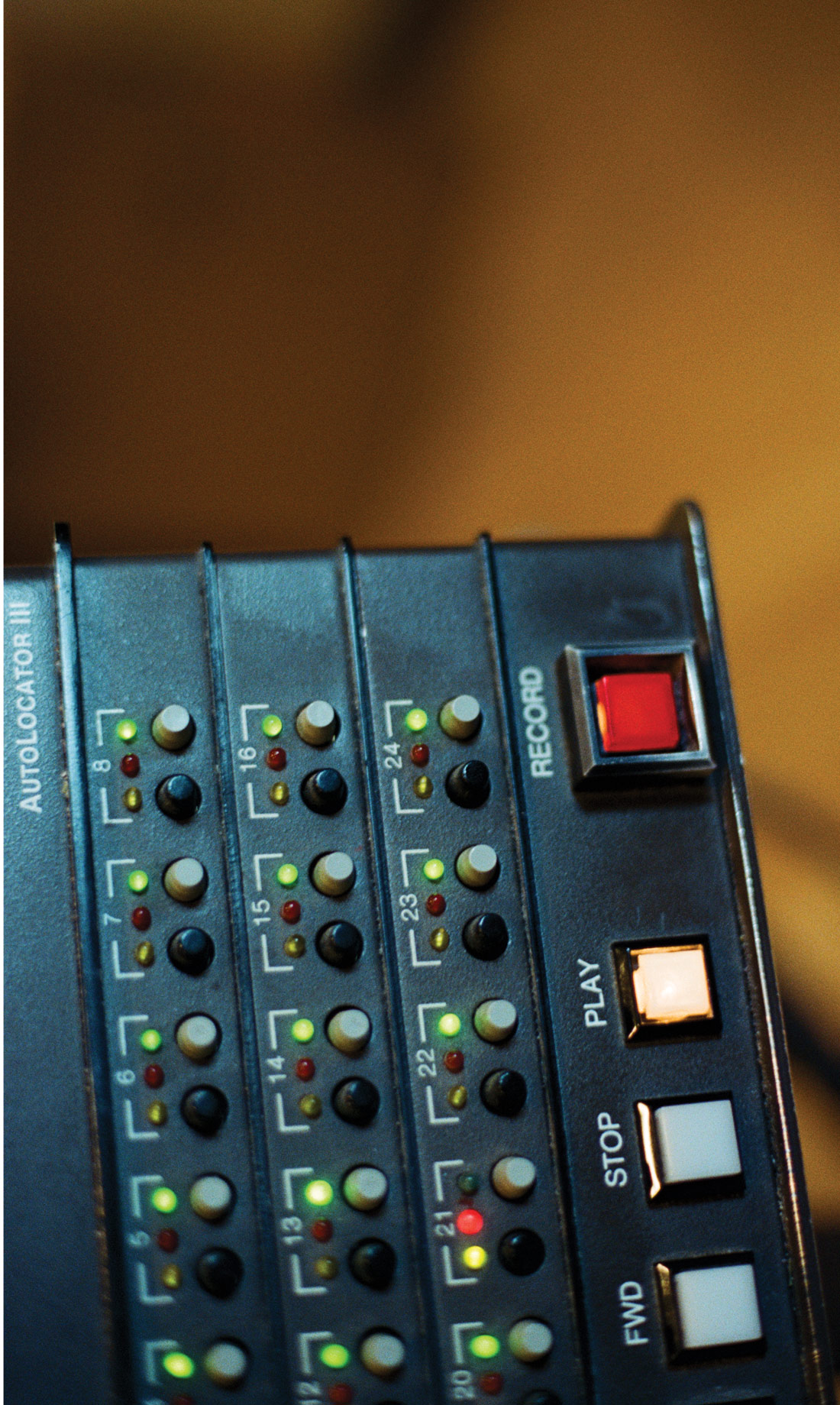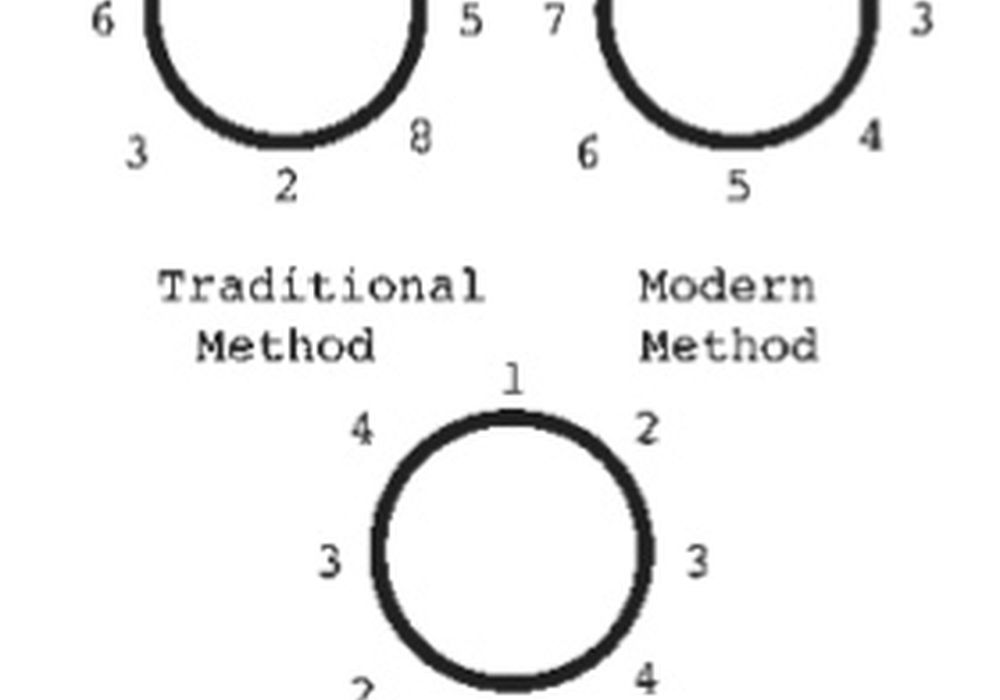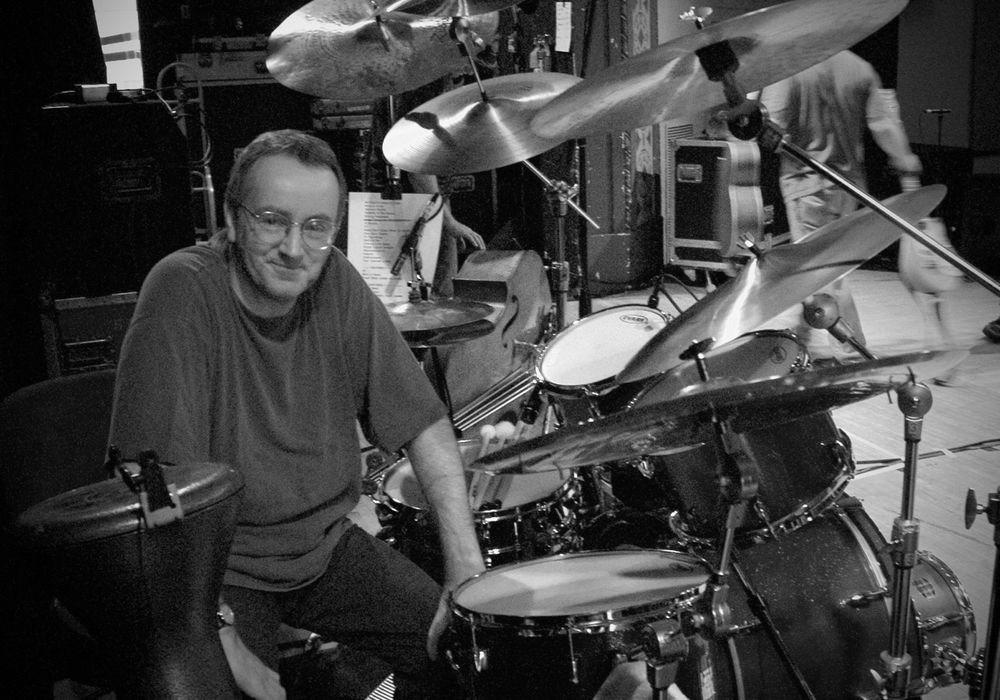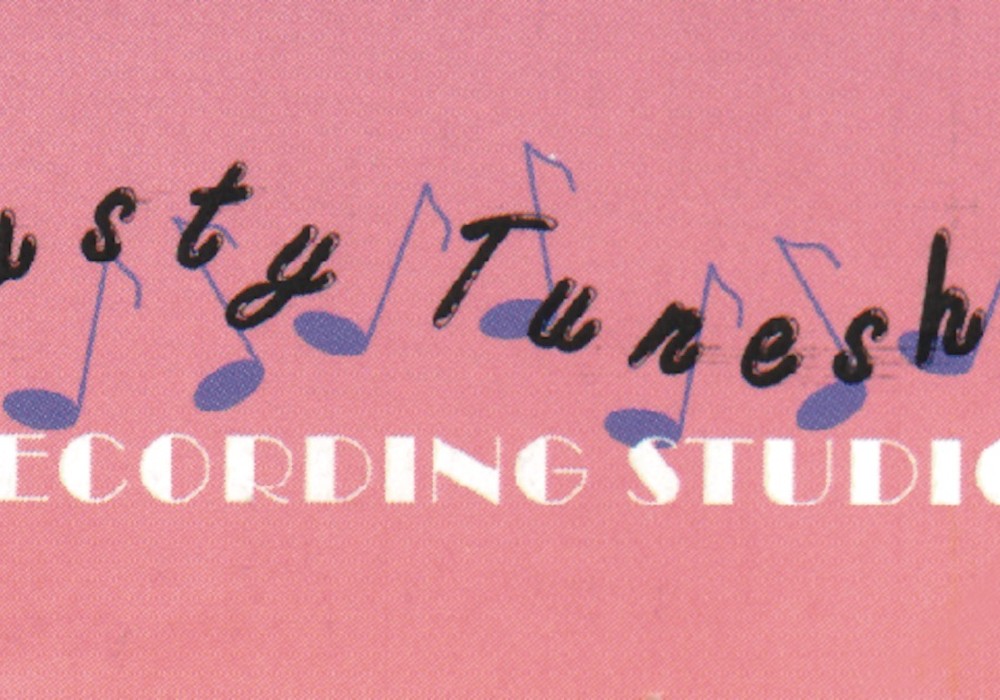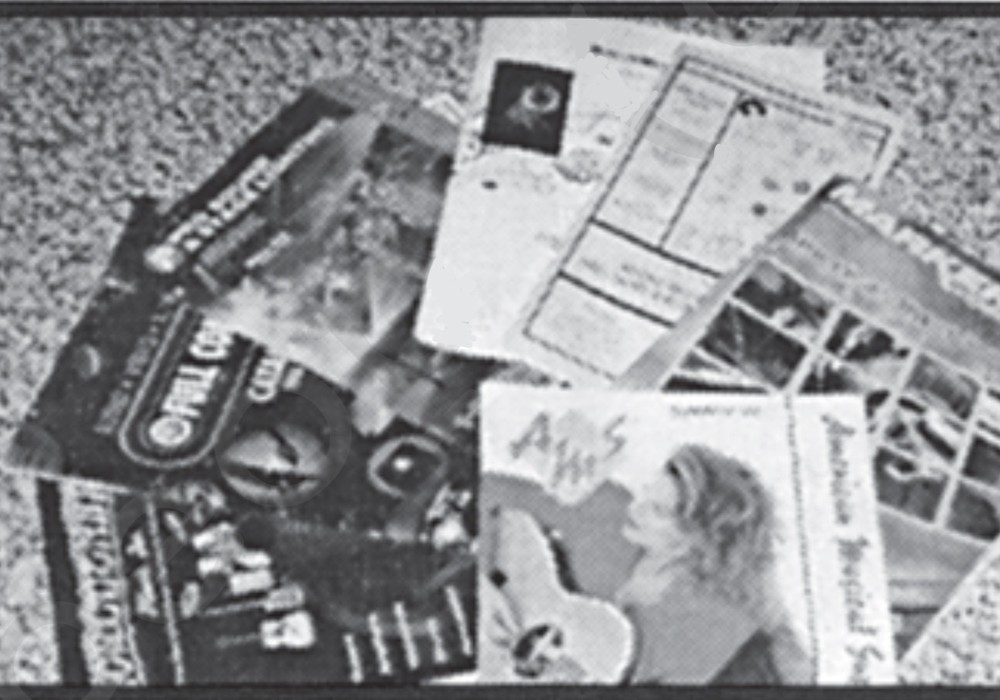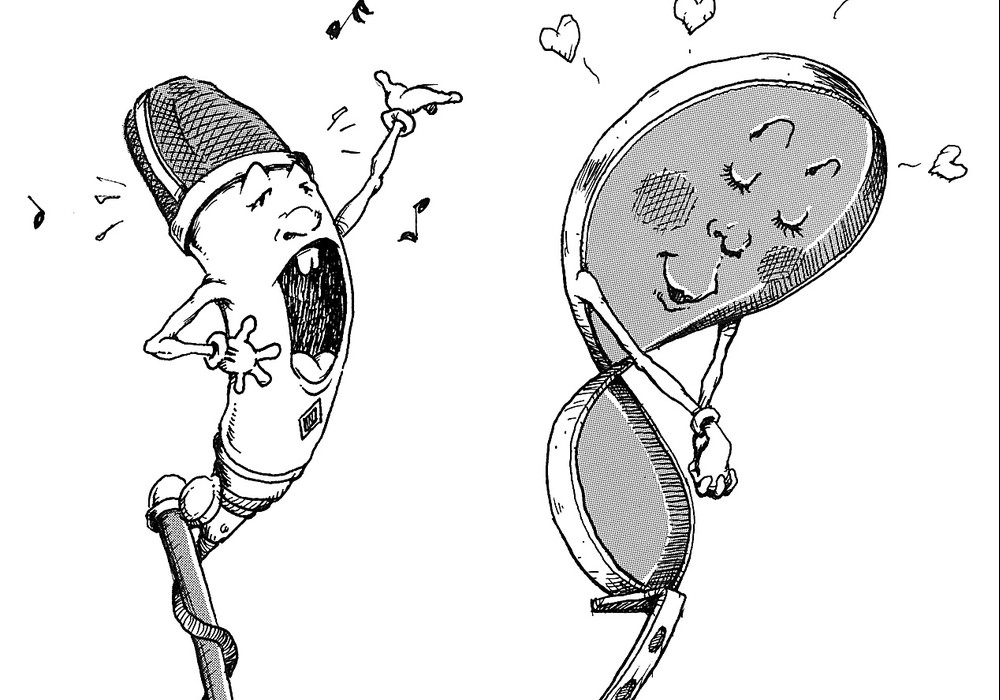I worked as an engineer and tech at Cherokee Recording Studios for over ten years and was involved in recording sessions at many other major Los Angeles recording studios. During that time I saw the recording methods used on many hit records and was able to watch world-class engineers and producers at work on a daily basis. For me there's nothing like the sound of great room mics in front of a kit in a big room like Cherokee's Studio One. As my group of friends moved on to home studios, I noticed that we were all trying to put "room mics" in front of the kit using all the same placement, compression and balance tricks we'd learned at places like Cherokee, generally with less than spectacular results. Too much cymbal splash is a particularly bad problem in most home recordings. Here are some conclusions I’ve come to in order to more closely approximate the room sound of a big studio in my home.
Treating the Room
I live in an 1100 square foot tract home in Simi Valley, California. It was originally completely carpeted, but three years ago we put hardwood floors in the living room and hallway and ceramic tile in the kitchen. This helped to get a brighter sound on the snare, but problems with cymbal splash were made worse. Obviously non-parallel surfaces would help. I was able to pull the drywall off my flat living room ceiling and have it vaulted for about $2,000. I managed to break up the problem of the parallel walls by strategically placing three bookshelves around the room. We started with a carpeted drum platform and an untreated drywall ceiling. I thought the carpet on the platform would reduce the cymbal splash, but it didn't help much. Studio drum guru Chris Heuer of Heuer's Drum Lab suggested that we treat the ceiling instead of the floor. We pulled the carpet off the platform and went to work on the ceiling. Engineer and studio guru Matt Forger suggested that a checkerboard pattern of Auralex would sound better than covering the entire ceiling with the absorptive panels. After some initial testing we also added a few spaced panels on one wall. I was pleasantly surprised to discover that a reflective floor and partially absorbent ceiling worked well in reducing cymbal splash, yet helped keep the snare ambience I was looking for and was much better than the reflective ceiling and carpeted platform approach.
Mic Placement and Types of Mics
We tried placing some large diaphragm condenser microphones high up in the corners of the room, very similar to what many engineers would do in a place like Cherokee. This is the typical setup I see my friends using in their living room and garage sessions. In omni, this gave a big bottom boost and nice room sound especially when compressed, but still had too much cymbal wash at times. I had come to believe that it was not possible to get an acceptable "room" sound in a house, so I started to concentrate on moving the mics closer to the drum kit in an attempt to get a balanced "direct" drum sound from a stereo pair of mics. Much to my surprise, I found that a pair of Shure KSM32 mics placed a mere 24" from the drum kit in my house seemed to have as much "room" sound as the U87s I'd placed fifteen feet away from the drums at Cherokee. After consulting some of my
engineering books, I realized that the key factor in how much "room" you got in your mic was not a factor of the distance from drums to mic. Rather it was a ratio of the distance from drums divided by the distance from walls. When I placed a set of mics 2' feet from the drums in my house, the direct/ambient ratio was two to one, the same as placing room mics 15' away at Cherokee. Why? Because at Cherokee the ratio of 15' from drums to 30' from walls was the same as 2' from drums to 4' from walls in my house. I also learned that placing those room mics very low (18" or less off the floor) helped to eliminate much of the cymbal splash. Using a pair of Blue Woodpecker ribbon mics also helped in further reducing the amount of high frequency wash. I now had a balanced room sound in the mics, but my living room just didn't have enough cubic volume to get the sound I wanted, so I tried adding room simulator plug-ins to get the additional "compressed big room" sound I was looking for. It was okay, but still missing some of the natural quality and largeness I'd experienced in the big rooms. I finally got the sound I was really looking for by putting a set of Studio Projects condenser mics at the end of the hallway pointing into the two bedrooms. The hallway in my house, though only 14' in length, has a zigzag in the middle. I thought correctly that this would roll off the cymbal wash via the tendency of high frequencies to not go around corners. I was also able to compress these mics quite a bit and get the "snare off the wall" sound I was looking for without bringing up the cymbal wash. The Woodpecker ribbon mics sounded even better. It was perfect except for the fact there was really no left/right drum image, more like a plate with a mono send and stereo return. Then while watching a video on the production of Never Mind The Bollocks, I learned that Chris Thomas had pointed his room mics at the floor to get rid of excess cymbal splash. I tried placing a pair of large diaphragm condenser mics 3' in front of the kit, about 1/8" off the floor and pointed directly at the floor. I found that these had a very balanced sound, a good stereo image and could be compressed. I also found that moving these mics an inch or two in any direction brought them in and out of some very useful low-end nodes. When mixed with the mics at the end of the hall, I had found the stereo "big room sound" I was looking for in my house.
Tricks with Compressors and Gates
One of the engineers I learned a lot from was George Tutko. George was instrumental in the production and recording of John Cougar's American Fool as well as albums by Rod Stewart and Duran Duran, to name a few. One of George's favorite tricks at Cherokee was to pump the kick, snare and toms through a big stereo speaker system set up on both sides of the kit during tracking. This allowed him to make the kick and snare much louder in the room, thereby reducing the amount of cymbal splash. At home I prefer to put a set of full-range speakers out in the living room after the fact. I send the kick, snare, and toms out via an echo send and slightly gate the individual drum tracks pre- send to reduce the cymbal leakage before feeding them to the speakers. By putting the gates pre-send, I avoid gating the room decay. I usually set the range of gating to between 8 and 15 dB, which is enough to reduce the cymbal leakage while still sounding pretty natural. I put my mics at the end of the hall and compress them with a long attack and short release. I think it's warmer and more natural than using a room simulator, although the plug-ins keep getting better and better. It's also my sound that no one else can buy in a box.
The Kit and the Drummer
Andy Johns is one of the most successful recording engineer/producers in the business. Andy has recorded many amazing drummers including John Bonham, Ginger Baker, Charlie Watts and Alex Van Halen. Recently Andy created the Platinum Samples Classic Drums sample library. I asked Andy how he gets a good drum sound: "Here's what's important. What I do before I start listening to sounds is I work on the kit. I get the drums that I like and the cymbals that I like. Then I listen and see if the kit is in balance with itself. Everything should be as live as possible and the drums have to be as loud as the cymbals. If the cymbals are louder than the drums, you're just going to get more bleed. It's going to go all around the room, so the room mics are now picking up more cymbals than the snare, toms or bass drum. You have to get the kit internally balanced. If you do that, you have a really good chance of making it work. The drum kit itself has to sound correct in the room. It's the source sound that matters." I then spoke with Hunt Sales, best known as the drummer on Iggy Pop's Lust For Life album, a member of Tin Machine and one of the best studio drummers in the business. According to Hunt, "You'll have a drummer who plays the hi- hat as loud as he plays the snare drum, and all that is amplified in the room mics. I would tell the drummer to play the hi-hat softer than you play everything else. I would look in a drummer's stick bag, pick out the lightest jazz stick, have him play that on the hi-hat and the [use] biggest stick on the snare — or just use a drummer that can play the kit with balance."
Types of Cymbals
I've been working with session drummer Marcos Lopez-Iglesias for several years. He has great control and can adjust the dynamics of individual drums on request. With the information from Andy and Hunt in mind, we decided to experiment with some different kinds of cymbals and see which gave us the most balanced sounding kit. We set up Marcos' vintage Gretsch kit with new tuned drumheads all around and tried recording different sets of cymbals to see what we liked best. There are many different sizes and thicknesses of cymbals. We were surprised to find that thicker cymbals are often less obtrusive in the overall mix than thinner cymbals. They generally died quicker and had less mid and more top. This was the opposite of what I expected — I thought thinner cymbals would be quieter, but after some discussion and thought, it made sense. A thicker cymbal has more mass and therefore will not flex as readily as a thinner cymbal. It also takes a much harder hit from a larger stick to get it moving. Another factor in cymbal production is the surfacing of the cymbal. Some cymbals are very polished while others maintain a rougher, unfinished surface. We found that the cymbals with a rougher surface decayed faster than the more polished cymbals. These are typically referred to as dry cymbals. For hi-hats we felt that sets with medium top hats and extra heavy bottom hats sat best in the drum mix. For rides, a medium-light dry cymbal worked well, but could get a little edgy while a heavy ride still cut through the mix, yet retained good stick and bell definition. This is by no means a definitive study of cymbals, but this knowledge can help in choosing the right cymbals for recording.
In conclusion, getting a good drum sound in your house boils down to these things:
- Treat the room properly.
- Find a drummer who can play the kit with a good dynamic balance.
- Make sure the drum heads are as open as possible so they're balanced with the cymbals.
• For your room mics use ribbon mics close to the floor or point a pair of large diaphragm condenser mics at the floor. Put another pair of mics down the hall pointing into other rooms to reject some of the high frequency and add size to the room sound.
- Do some research and try a variety of cymbals. Don't be surprised if some large, thick cymbals are actually quieter than smaller, thinner cymbals.
- Set up some speakers and pump the kick, snare and toms back into the same room they were originally recorded in and re-record the ambience.
Chas Ferry spent 25 years working in Hollywood as a recording engineer/producer, music editor and tech. He currently runs Rock Talk Records/Rock Talk Music and has a very nice home studio in Simi Valley, California. www.rocktalkrecords.com
Marcos Lopez-Iglesias is a session drummer in Los Angeles. He originally hailed from Manchester, England and has played drums with Limahl of Kajagoogoo and Duran Duran. www.musicbymarcos.com
Thanks to Andrew Shreve at Paiste for the cymbal loans — www.paiste.com
